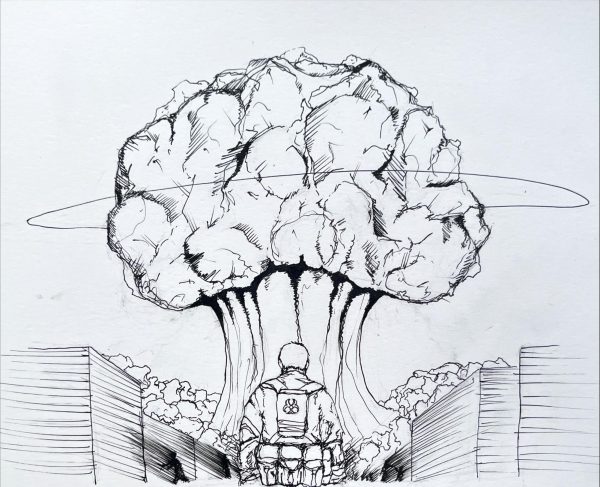Soviets retain conventional advantage
September 28, 1987
The search for good reasons for rejoicing about the U.S.-Soviet agreement on intermediate-range nuclear forces is like the 19th century search for the source of the Nile— difficult.
The agreement will retire fewer than 4 percent of the worldwide inventory of warheads. The retirements are concentrated in Europe and will magnify the importance of the enormous Soviet conventional-force advantage.
It is preposterous to say that domestic exigencies drove the Kremlin in this direction. The agreement will have no measurable effect on either side’s defense spending.
The agreement removes from Europe the weapon the Soviets fear most, the Pershings. They can penetrate the Soviet Union with certainty and can strike targets accurately in 13 minutes. The Soviets will dismantle no weapons that could strike America.
Some defenders of the agreement say the weapons to be scrapped are too vulnerable to be valuable. These defenders have a point.
There are two ways to reduce the vulnerability of weapons—armor or mobility. The Pershings and cruise missiles were supposed to be quickly dispersible during crises. But host countries have put unreasonable restraints on the movements of the weapons. In a crisis, U.S. requests to host countries to disperse the missiles probably would be rejected as provocative.
estraints on the movements of the weapons reflect Europe’s haunted memory. The specter in America’s historical memory is Pearl Harbor, a lightning strike. Europe’s obsession is the first World War, which began with mobilization that became inexorable. Pershing and cruise missiles, immobilized by Europe’s historical anxieties, could be destroyed at their bases by Soviet conventional weapons.
The administration hails the INF agreement as a “first step” toward grander things. But wiser heads hope it is a last step. They hope it will anesthetize Europe’s peace movement and America’s arms control clerisy. It is supposed to ease the pressure to cut defense budgets in order to enrich welfare-state benefits.
But arms control agreements whet the thirsts they are supposed to slake. The INF agreement will energize the forces pushing for denuclearization of Europe. President Reagan’s recent rhetoric has contributed to the stigmatization of nuclear weapons.
The INF agreement will require the Soviets to destroy many more warheads than the United States. But that asymmetry is a small price for the Soviets to pay for the consequent enhancement of conventional forces. To enhance European stability now would require Soviet consent to another asymmetrical reduction, this time of conventional forces. They have no incentive for that.
Military historian John Keegan says the agreement may recover for the Soviet Union much that it lost in Europe through two postwar blunders. In 1945, the Soviet Union withdrew from Yugoslavia, thereby forfeiting access to the Mediterranean. After the 1956 Austrian treaty, it withdrew forces from Hungary, thereby igniting the revolt that cost communism its idealogical elan. But the consent Soviet aim—military dominance of the continent—requires neither.
Soviet military dominance is advanced by agreements that reduce nuclear forces without reducing conventional forces. The INF agreement rests on the fallacy that any subtraction from nuclear inventories makes the world safer.
The Soviet approach to arms control has nothing to do with “control” as Western public understands it—nothing to do with reducing the importance of weapons in the relations between nations. The Soviets use arms control to impede the West’s procurements and deployments, to channel arms competition in directions disadvantagous to the West, and to produce detente, the climate conductive to Soviet parasitism—the theft and subsidized purchase of Western technology.
The closest one can come to good reasons for accepting the INF agreement is this: Arms agreements are inevitable. This is the minimalist arms control; it is the least we can do. And perhaps the recrudescence of detente can be minimized.











